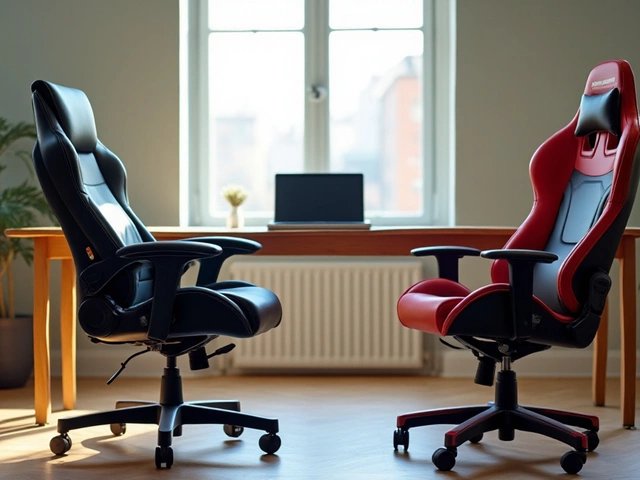Furniture isn’t one of those things you just grab on a whim. It’s a big purchase, and nobody wants to buy a couch only to see it marked down a few weeks later. So, when’s the absolute cheapest month to buy furniture? Spoiler: it’s not during the holidays. You’ll find the best deals when nobody else is really shopping.
Here’s what a lot of folks miss: furniture stores bring in new inventory twice a year—once in the spring and again in the fall. Right before those shipments arrive, they need to clear space. That’s when old stock gets slashed. Want that massive sectional for less? Watch for end-of-winter and end-of-summer clearance sales.
- Why Furniture Prices Change by Month
- The Best Months to Snag Furniture Bargains
- Secrets Behind Retailer Discount Strategies
- How to Maximize Savings When Shopping
- Extra Tips for Timing Your Furniture Purchase
Why Furniture Prices Change by Month
Furniture prices aren’t random, and there’s a real pattern to the discounts if you pay attention. New furniture collections hit showrooms in February and August. Retailers need to make space on their floors, so prices on the current stuff drop right before new pieces roll in. That means January and July are the secret weapons for bargain hunters.
Supply and demand play a big role, too. When people aren’t thinking about remodeling—usually in the dead of winter or the sweaty end of summer—stores see fewer shoppers. To get people in the door, they lower prices and throw in extra deals.
"Buying furniture at the end of a season often means scoring the best discounts, because stores want to clear out stock before new models arrive," says Doug Clark, regional sales manager for a major furniture retailer.
It isn’t just about clearing space. Slow months mean stores have to work harder for your business. They might offer free delivery, bundle discounts, or throw in extras just to clinch the sale.
The data backs this up. Here’s a quick breakdown of how average furniture prices shift throughout the year:
| Month | Average Discount % | Inventory Turnover |
|---|---|---|
| January | 25-60% | High |
| July | 20-50% | High |
| February-March | 10-20% | Low |
| August-September | 10-20% | Low |
| May | 5-10% | Medium |
| December | 5-15% | Medium |
So, if you’re hungry for the cheapest month to buy furniture, keep your eyes on those end-of-season clear-outs. Those are the sweet spots for deals.
The Best Months to Snag Furniture Bargains
If you want to save big, you have to shop when stores are trying to clear stuff out. The cheapest month to buy furniture is usually January for indoor items and July or August for outdoor pieces. It all comes down to retailers making room for new styles.
Here’s how it usually breaks down:
- January and February: Indoor furniture gets cheap because new models show up in February and March. Stores offer discounts up to 60%, and you’ll see lots of clearance tags.
- July and August: Thinking patio sets, grills, and outdoor accessories? Prices are lowest at the end of summer. Shop then to get leftovers for way less before fall inventory starts.
Why do stores do this? Furniture makers launch new collections twice a year. Right before that, showrooms want nearly empty floors so they’re motivated to slash prices, especially on bulky stuff that’s tough to store.
| Type of Furniture | Best Months to Buy | Estimated Average Discount |
|---|---|---|
| Indoor Furniture | January - February | 40% - 60% |
| Outdoor Furniture | July - August | 30% - 50% |
| Mattresses | May | 40% - 60% |
| Home Office | September | 25% - 40% |
One more thing: Presidents’ Day in February and Labor Day in September also often see big sales, but if you’re after the cheapest month to buy furniture, the clearance timing beats the holiday promos most years. Retailers want stuff gone and the discounts prove it.

Secrets Behind Retailer Discount Strategies
If you’ve ever wondered why furniture seems to go on sale at the weirdest times, it’s not random. Retailers plan it all out months in advance, following patterns that have worked for decades. Their goal: move old stock fast before next season’s stuff crowds the floor.
Most major stores cycle in new living room and bedroom items twice a year: February and August. Right before that, in January–February and July–August, they get aggressive with markdowns. A sales manager at a national furniture chain admitted,
"We have to make room for shipments, and old inventory just has to go. The best deals honestly pop up right before we switch out the floor models."So if you’re chasing the cheapest month to buy furniture, zero in on these pre-season stretches.
Why push so hard? New styles and color trends hit showrooms in early spring and late summer. If last year’s gray sofa is still hanging around, it eats up valuable floor space and doesn’t match new ads. Stores would rather mark it down than let it collect dust.
Retailers have a few tricks up their sleeves:
- Stackable discounts: You’ll sometimes catch a percent-off sale on top of clearance pricing. That’s rare, but it happens when they’re desperate to clear everything fast.
- "Doorbuster" promos: Certain weekends, usually the last of the month, stores hype limited-time deals to spark a rush.
- Holiday "fakeouts": Yes, you’ll see big signs for Memorial Day or Labor Day deals, but deep down, these typically aren’t as good as end-of-season clearances.
Need proof? Check out this price change table from an industry pricing report:
| Month | Avg. Discount (%) | Inventory Turnover |
|---|---|---|
| January | 34% | High |
| February | 37% | Very High |
| August | 29% | High |
| September | 31% | Very High |
| May | 17% | Medium |
The biggest cheapest month to buy furniture discounts clearly align with those inventory changeover windows. So if you’re timing your purchase, track the months when stores are in a hurry to clear out old pieces—that’s when you’ll score the best deals.
How to Maximize Savings When Shopping
Scoring a serious deal on furniture goes way beyond just walking into a store during a sale. You need the right tricks up your sleeve if you want to save the most during that cheapest month to buy furniture. Most folks don’t realize how much prices actually shift—or all the extra ways you can knock the cost down even further.
One key fact: According to the National Retail Federation, the best mark-downs happen at the end of January and July because that’s when stores clear out last season’s styles. On average, you’ll see discounts ranging from 20% to 60% during these clearance periods. And if you’re hunting for mattresses or office chairs, keep an eye out during Presidents' Day, Labor Day, or Black Friday for limited-time blowouts.
"Timing your purchase right can save you hundreds, sometimes thousands. Furniture pricing isn’t random—it’s all about inventory cycles and store traffic." – George Matthews, Senior Editor at Furniture & Today
If you’re looking to stack up even more savings, here’s what you should do:
- Ask about floor models. These pieces have been on display so you can often negotiate a bigger discount. Don’t worry—most have only minor scuffs.
- Take advantage of price matching. Major chains like Ashley, Rooms To Go, and even some local stores match competitor prices if you show proof.
- Look for coupon codes online. Sites like RetailMeNot or Honey often feature secret discounts and printable in-store coupons you won’t get by just browsing the store’s site.
- Sign up for store emails or rewards programs. Some brands (like West Elm and Crate & Barrel) send out special offers or early-access to sales for members.
- Bargain, especially at local stores. Independent furniture shops expect a little haggling, especially if you’re buying more than one piece or are paying in cash.
Ever wonder if picking up your own purchase can save you cash? Many stores charge $100–$250 for delivery, so ask if self-pickup knocks a bit off the price tag.
| Sale Event | Typical Discount |
|---|---|
| End-of-Season Clearance | 25%–60% |
| Presidents' Day | 15%–40% |
| Labor Day | 20%–50% |
| Black Friday | 30%–60% |
Another solid tip: If you see a price drop on your purchase within 30 days, lots of stores will refund you the difference—just keep that receipt handy. And don’t forget, buying just before new styles arrive is when stores are most willing to negotiate just to clear the floor. Timing matters way more than people think when you’re chasing the lowest price.

Extra Tips for Timing Your Furniture Purchase
Getting the lowest price isn’t just about picking the right month. You can stack the odds in your favor by paying attention to some retail habits and shopper tricks that have worked for years.
Here’s what matters: Most furniture sales revolve around the rush to clear out last season’s inventory—those clearance sales just before spring (late January and February) and late summer (August and September). But don’t stop there.
- Holiday weekends, especially Presidents’ Day and Labor Day, are famous for solid deals, but shopping slightly before or after these dates can sometimes uncover even deeper discounts.
- End-of-the-month shopping can help, since salespeople often want to hit their targets and may toss in extras or drop the price if you ask.
- Mid-week visits (Tuesday through Thursday) are less crowded, and managers may have more time to offer a better deal or price match.
- If you’re flexible, shop floor models or “scratch and dent” pieces toward the end of big sale periods. These can go for up to 60% off the original tag.
- Signing up for retailer email alerts gets you early heads up on clearance dates and private coupons that aren’t always advertised.
For a quick comparison, check out when prices tend to drop throughout the year:
| Month | Average Discount (%) | Notes |
|---|---|---|
| January-February | 35-50 | Major clearance sales before new inventory |
| May | 25-35 | Memorial Day sales ramp up |
| July-September | 30-60 | Summer clearance, end-of-season deals |
| November | 20-30 | Black Friday/Cyber Monday, but less consistent than clearance periods |
One extra hack: Buy off-season. Need patio furniture? Try shopping as fall starts and retailers are desperate to move outdoor sets. Want a new sofa? Late winter is usually your best bet.
Finally, always compare deals online before heading to the store, and don’t be shy about negotiating. Most managers have wiggle room on prices—especially during cheapest month to buy furniture windows. Every dollar you save means a bigger budget for that side table or lamp you’ve been eyeing.



